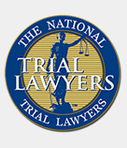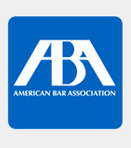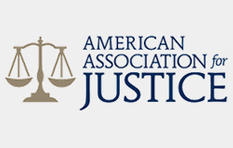When a personal injury case proceeds to trial, the process unfolds through several distinct stages. Each phase serves a specific purpose in presenting evidence, examining witnesses, and ultimately allowing a jury to reach a verdict. Understanding what happens at trial helps you prepare for what lies ahead and recognize why thorough case preparation matters.
If you’ve been injured in a car accident, truck accident, motorcycle accident, or slip and fall incident, our personal injury attorneys can guide you through the trial process. Contact us today to discuss your case.
What Happens Before Trial Begins
Before any trial takes place, significant work occurs behind the scenes. The discovery phase allows both sides to exchange information, gather evidence, and identify witnesses. Attorneys conduct depositions—recorded interviews where witnesses and parties answer questions under oath. Interrogatories and requests for admission help establish facts without dispute.
Pre-trial motions may be filed to address legal issues, exclude certain evidence, or resolve disputes about case procedures. Many personal injury cases settle during this phase through negotiation or mediation, where a neutral third party helps both sides reach an agreement. However, when settlement discussions don’t result in a resolution, the case proceeds to trial.
Pre-Trial Motions and Settlement Negotiations
Attorneys file motions to address procedural matters and legal questions before trial begins. Settlement negotiations often intensify as trial approaches, with both sides evaluating case strength and potential outcomes. If parties cannot reach an agreement, the case moves forward to trial preparation and jury selection.
Jury Selection and Opening Statements
Trial begins with jury selection, a process called voir dire. The court summons a jury pool of potential jurors. Attorneys from both sides question prospective jurors to identify bias, conflicts of interest, or reasons they cannot serve fairly. Each side may challenge jurors whom they believe cannot decide the case impartially. The goal is to seat a jury that will fairly evaluate the evidence presented.
Once the jury is seated, each attorney delivers an opening statement. These statements are not evidence—they are roadmaps. Attorneys outline what they expect the evidence will show and preview the case theme. The plaintiff’s attorney explains why the defendant bears responsibility for the injury and damages. The defense attorney presents the defendant’s perspective and challenges to the plaintiff’s claims.
How Jury Selection Works
Voir dire allows attorneys to assess juror attitudes, life experiences, and potential biases. Jurors answer questions about their backgrounds, beliefs about personal injury law, and any connections to the parties or issues in the case. This process helps ensure a fair and impartial jury.
What Opening Statements Accomplish
Opening statements frame the case for jurors. They establish the narrative each side will present through evidence and testimony. While not binding, opening statements influence how jurors interpret the evidence that follows.
Presenting Evidence and Witness Testimony
The plaintiff bears the burden of proof in a personal injury case. This burden is “preponderance of the evidence”—meaning the evidence must show it is more likely than not that the defendant caused the injury through negligence or wrongful conduct.
The plaintiff’s attorney presents evidence first, calling witnesses to testify. Witnesses may include the injured person, medical providers, accident scene witnesses, and experts in fields like medicine, engineering, or accident reconstruction. Each witness answers questions from the plaintiff’s attorney, then faces cross-examination from the defense attorney.
Cross-examination allows the opposing side to challenge testimony, explore inconsistencies, and present alternative explanations. Physical evidence—photographs, medical records, accident reports, product defects—is also presented and discussed. Expert witnesses explain technical matters and offer opinions based on their knowledge and experience.
How Evidence Is Presented at Trial
Evidence takes multiple forms: testimony from witnesses, physical objects, documents, photographs, videos, and expert opinions. Each piece of evidence is introduced, authenticated, and discussed. Jurors evaluate credibility and the weight of evidence as it is presented.
Cross-Examination and Challenging Evidence
The defense attorney cross-examines each witness to test accuracy, explore bias, and present alternative interpretations. Defense evidence and witnesses then present the defendant’s version of events and challenge the plaintiff’s claims about liability and damages.
Closing Arguments and Jury Instructions
After all the evidence is presented, each attorney delivers a closing argument. These arguments summarize the evidence, explain how it applies to the law, and persuade jurors to rule in their client’s favor. Attorneys connect evidence to legal requirements for liability and damages. They address weaknesses in the opposing side’s case and reinforce their own case theme.
The judge then instructs the jury on the law they must apply. Jury instructions explain legal standards, define key terms, and guide jurors through the decision-making process. Instructions address the burden of proof, elements of negligence or other claims, and how to calculate damages if liability is found.
What Attorneys Argue in Closing Statements
Closing arguments synthesize evidence into a coherent narrative. Attorneys explain why the evidence proves their case and why the opposing side’s arguments fall short. They remind jurors of key testimony and evidence that supports their position.
How Judges Instruct Juries on the Law
Jury instructions provide the legal framework for the verdict. They define negligence, explain the burden of proof, address comparative fault if applicable, and guide damage calculations. Jurors must follow these instructions when reaching their verdict.
The Verdict and Post-Trial Options
Jurors deliberate in private, discussing the evidence and applying the law to reach a verdict. In most jurisdictions, the verdict must be unanimous—all jurors must agree. However, some states allow non-unanimous verdicts in civil cases, typically requiring a supermajority such as nine out of twelve jurors. Your attorney can explain the specific verdict requirements in your jurisdiction. The jury announces whether the defendant is liable and, if so, what damages the plaintiff should receive.
Once the verdict is entered as a judgment, the case may not be over. Either party may file post-trial motions challenging the verdict or requesting a new trial. Appeals may be filed if legal errors occurred during the trial. If the plaintiff prevails, enforcement of the judgment may be necessary to collect the award.
How Juries Reach a Verdict
Jurors discuss evidence, apply jury instructions, and work toward agreement. They may ask the judge for clarification on evidence or law. The verdict reflects their collective decision on liability and damages.
What Happens After the Verdict
Post-trial motions may challenge the verdict’s validity. Appeals address claimed legal errors. Judgment enforcement ensures the plaintiff receives the awarded damages if the defendant does not pay voluntarily.
How The Bruner Law Firm Prepares Your Case for Trial
Thorough trial preparation significantly influences outcomes. Our attorneys investigate thoroughly, gather compelling evidence, and prepare witnesses to testify effectively. We coordinate with medical experts and other specialists to explain complex issues clearly to jurors.
Our legal team develops a trial strategy based on case strengths and weaknesses. We anticipate defense arguments and prepare responses. Mock trials or focus groups may test case themes and messaging. Detailed trial notebooks organize evidence, witness information, and legal arguments for quick reference during trial.
The Bruner Law Firm brings decades of trial experience to personal injury cases. Our attorneys have represented injured clients through all stages of litigation, from initial investigation through trial and appeal. We prepare each case as if it will go to trial, ensuring we are ready to present your case effectively to a jury. Learn more about our firm and our commitment to client success.
Frequently Asked Questions About Personal Injury Trials
Do most personal injury cases go to trial?
No. The majority of personal injury cases settle before trial through negotiation or mediation. However, when a fair settlement cannot be reached, a trial becomes necessary. Thorough case preparation—as if trial is certain—often leads to better settlement offers because defendants recognize case strength.
How long does a personal injury trial take?
Trial length varies based on case complexity, number of witnesses, and amount of evidence. Simple cases may conclude in a few days. Complex cases involving multiple parties, significant injuries, or technical issues may take weeks or longer. Your attorney can estimate a timeline based on your specific case.
Can I represent myself at trial?
While you have the right to represent yourself, personal injury trials involve complex legal procedures, evidence rules, and strategy. Judges and juries expect a professional presentation. An experienced personal injury attorney significantly improves your chances of a favorable outcome.
What is the burden of proof in a personal injury case?
The plaintiff must prove the case by a “preponderance of the evidence,” meaning it is more likely than not that the defendant caused the injury through negligence or wrongful conduct. This is a lower burden than “beyond a reasonable doubt” used in criminal cases.
What if I disagree with the jury’s verdict?
Post-trial motions may challenge the verdict if legal errors occurred or if the verdict is unsupported by evidence. Appeals address claimed legal errors during trial. An attorney can evaluate whether grounds exist to challenge the verdict and explain your options.
Ready to Discuss Your Case?
Understanding the personal injury trial process in Florida is the first step toward protecting your rights. If you’re facing a personal injury claim, contact The Bruner Law Firm for a free consultation. Our experienced legal team is ready to guide you through every stage of your case.







